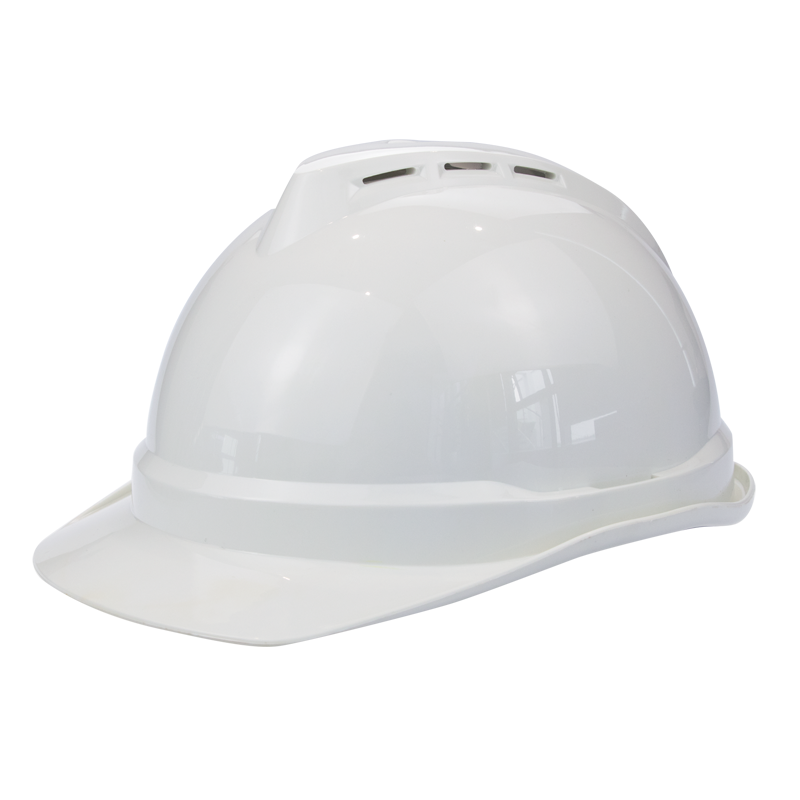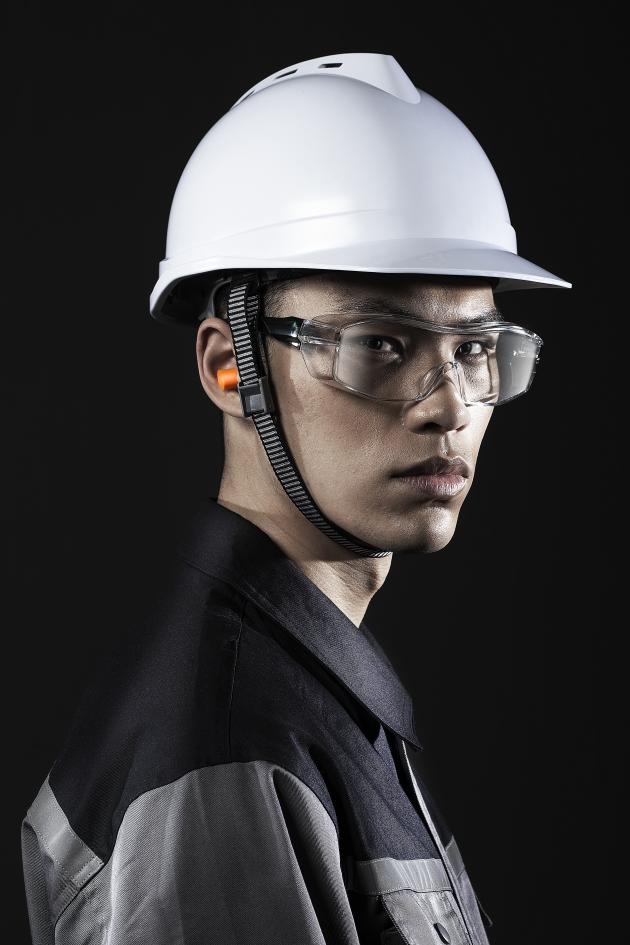The Fiberglass Helmet – Ensuring Safety from Top to Bottom
In various activities, safeguarding the head is paramount for personal safety. As we delve into the realm of protective gear, fiberglass helmets emerge as a leading solution. Andanda, a pioneering force in workplace safety, stands at the forefront of this innovation. With expertise spanning PPE design, research, and production, Andanda boasts a dedicated R&D team and Innovation Center of Excellence (CIE), driving groundbreaking advancements in safety technology. Through the fusion of digital and protective technologies, Andanda facilitates seamless access to high-quality PPE, offering tailored industry solutions. This convergence of expertise and innovation ensures top-tier protection, exemplifying Andanda’s commitment to safety excellence.
Understanding Fiberglass Helmets
Unveiling Fiberglass: Composition and Definition
Fiberglass, comprising fine glass fibers, stands out as a composite material celebrated for its robustness and versatility. Typically crafted by weaving glass strands into a fabric-like structure, fiberglass offers outstanding durability and resistance to impact, rendering it an optimal choice for helmet construction.
Helmets’ Evolution and the Advent of Fiberglass
Helmets have traversed a significant evolutionary path, progressing from rudimentary designs to sophisticated protective gear. The introduction of fiberglass marked a turning point in helmet manufacturing, presenting a lightweight yet resilient alternative to traditional materials like metal or plastic. This breakthrough reshaped the landscape of head protection, ushering in safer and more comfortable helmet designs across diverse industries.
Fiberglass Helmets’ Edge Over Conventional Materials
Fiberglass helmets boast a multitude of advantages over their counterparts fashioned from conventional materials. Primarily, fiberglass showcases an impressive strength-to-weight ratio, offering superior protection while maintaining comfort. Moreover, fiberglass helmets exhibit high resistance to impact, efficiently dispersing force to mitigate the risk of head injuries. Additionally, fiberglass’s malleability enables intricate helmet designs, ensuring optimal fit and ergonomic performance for users.

Engineering for Safety
Blueprinting Safety: Design Principles of Fiberglass Helmets
The design of fiberglass helmets is anchored in engineering principles aimed at maximizing safety and wearer comfort. Utilizing advanced computer-aided design (CAD) software, precise modeling of helmet shapes is achieved, ensuring optimal aerodynamics and structural integrity. Furthermore, ergonomic considerations are pivotal in helmet design, emphasizing the even distribution of weight and minimization of pressure points to elevate wearer comfort.
Withstanding Impact: Resistance and Durability
Fiberglass helmets are meticulously engineered to endure high-velocity impacts while preserving their structural integrity. The inherent strength of fiberglass fibers enables helmets to absorb and dissipate energy upon impact, diminishing the risk of head trauma. Additionally, fiberglass’s exceptional durability ensures sustained protection, capable of withstanding harsh environmental conditions and repeated use without deterioration.
Breathing Easy: Ventilation and Comfort Features
Effective ventilation is paramount in preventing heat buildup and ensuring wearer comfort during extended use. Fiberglass helmets are equipped with strategically positioned vents and airflow channels, facilitating efficient heat dissipation and moisture management. Furthermore, padding materials and adjustable retention systems further enhance comfort and stability, enabling users to tailor the fit to their preferences.
Testing and Certification
Upholding Standards: Helmet Safety in the Industry
Regulatory bodies and industry organizations establish stringent helmet safety standards to ensure consistency and effectiveness in protective gear. These standards delineate requirements for various facets of helmet performance, encompassing impact resistance, penetration resistance, and retention system efficacy. Adherence to these standards is imperative for manufacturers to affirm the safety and reliability of their fiberglass helmets.
Trials of Strength: Testing Procedures for Fiberglass Helmets
Fiberglass helmets undergo rigorous testing procedures to assess their performance under simulated real-world conditions. These tests typically entail subjecting helmets to impacts of varying severity and directions, alongside evaluating their resistance to penetration and deformation. Additionally, assessment of helmet ventilation and retention systems is conducted to ascertain optimal functionality and wearer comfort.
Trust through Certification: Building Consumer Confidence
Certification from accredited testing laboratories and compliance with industry standards are pivotal in fostering consumer confidence in fiberglass helmets. Through obtaining certification, manufacturers underscore their commitment to meeting stringent safety requirements and upholding quality standards. Consumers can repose trust in certified fiberglass helmets to furnish reliable protection against head injuries, empowering them to make informed purchasing decisions with assurance.
Fiberglass Helmets Across Diverse Fields
Sports Applications
Fiberglass helmets are extensively utilized in various sports disciplines such as cycling, skiing, and snowboarding. Their lightweight yet durable construction provides athletes with superior protection against impacts while ensuring comfort and agility. The aerodynamic design of fiberglass helmets enhances athletic performance, making them a preferred choice among both professional and recreational athletes.

Industrial Usage
In industrial sectors like construction and mining, fiberglass helmets are indispensable for ensuring worker safety. Their exceptional durability and resistance to impact make them ideal for environments with prevalent hazards. Fiberglass helmets offer crucial head protection against falling objects, collisions, and other workplace dangers, thereby safeguarding the well-being of workers in hazardous conditions.
Military and Law Enforcement Deployment
Fiberglass helmets play a critical role in military and law enforcement operations, where personnel face high-risk scenarios. These helmets provide advanced ballistic protection and durability, shielding individuals from projectiles, shrapnel, and blunt force trauma. Their lightweight design and ergonomic features enhance wearer comfort during prolonged missions, establishing fiberglass helmets as an essential component of protective gear for military and law enforcement personnel.
Addressing Common Concerns
Weight and Comfort Comparisons
Comparisons regarding weight and comfort often arise between fiberglass helmets and those made from alternative materials. Despite potentially weighing slightly more than some alternatives, fiberglass helmets offer superior strength-to-weight ratios, ensuring optimal protection without sacrificing comfort. Advanced padding and ventilation systems further enhance wearer comfort, addressing concerns about helmet weight during prolonged use.
Environmental Impact of Production
Valid concerns exist regarding the environmental impact of fiberglass production, given the energy-intensive manufacturing processes involved. However, ongoing advancements in sustainable manufacturing practices and recycling initiatives are gradually mitigating these concerns. Manufacturers are increasingly adopting eco-friendly production methods and exploring alternatives to minimize the environmental footprint of fiberglass helmets.
Accessibility and Affordability
Accessibility and affordability are pivotal considerations for consumers when selecting protective gear like fiberglass helmets. While fiberglass helmets may initially entail a higher upfront cost compared to some alternatives, their long-term durability and superior performance often justify the investment. Additionally, intensifying competition and advancements in manufacturing technologies are driving down prices, making fiberglass helmets more accessible to a broader range of consumers.
Future Developments
Advancements in Material Science
Ongoing advancements in material science are fueling innovations in helmet design, with a primary focus on enhancing performance and safety. Research into new composite materials and manufacturing techniques holds promise for further improving the strength, durability, and weight of fiberglass helmets, ensuring continuous evolution in protective gear technology.
Integration of Technology for Enhanced Safety
The integration of technology into fiberglass helmets is poised to revolutionize safety features and functionality. From built-in sensors for impact detection to augmented reality displays for enhanced situational awareness, technological innovations promise to elevate the level of protection and user experience offered by fiberglass helmets across various applications.
Potential for Customization and Personalization
The future of fiberglass helmets holds exciting possibilities for customization and personalization. Advancements in additive manufacturing techniques enable the creation of bespoke helmet designs tailored to individual preferences and requirements. From customizable fit adjustments to personalized aesthetics, fiberglass helmets are poised to offer unparalleled versatility and user satisfaction in the years to come.
CONCLUSION
Fiberglass helmets stand as a pinnacle of safety innovation, ensuring protection from top to bottom in diverse fields ranging from sports to industrial and military applications. Their lightweight yet robust construction, coupled with advanced design principles and technological integration, epitomizes a commitment to safety excellence. Addressing common concerns and embracing future developments, fiberglass helmets continue to evolve, offering unparalleled comfort, durability, and customization options. As guardians of personal safety, fiberglass helmets epitomize reliability and assurance, embodying a steadfast commitment to safeguarding lives in various endeavors.